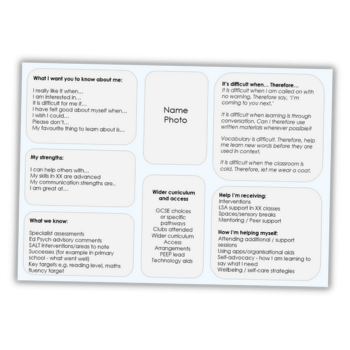Phone addiction – Teach students how to self-regulate screen time

What will it take for young people to learn self-regulation when it comes to their online activities? Natasha Devon shares her thoughts…

Whenever I speak to parents on the topic of tech and social media, the same question is often asked – ‘How much screen time is appropriate for an X-year-old?’
This might seem like a simple query, but in reality it’s anything but. After all, ‘screen time’ is a somewhat nebulous concept. Two hours scrolling TikTok isn’t quite the same as two hours spent reading Orwell on a Kindle.
I also think this question, whilst understandable, misses the point when it comes to how we guide young people through the tech revolution. As noted in a recent report published by Ofcom, it’s not the fact of social media itself, or even how much time is spent on it that’s the issue; it’s all about literacy.
Providing children and teenagers with the skills to navigate the online world is a process that requires more vigilance than simply monitoring their screen time. That might sound daunting, but I believe there are just a few key abilities – most of which classroom teachers are prioritising already – that cover multiple bases.
1. Self-regulation and phone addiction
There are two common reasons for phone addiction. One is the simple fact of the human condition. We don’t like to sit with uncomfortable feelings. Boredom is mildly uncomfortable, and technology is an easy distraction.
The other reason for phone addiction is that developers design apps and games to steal our time, using the same techniques that hook in gambling addicts.
The more time we spend engaging in online activity, the more companies can harvest our data and sell it on to third parties. As the (brilliant) Netflix documentary The Social Dilemma puts it, ‘If you don’t have to pay for a product, that means you ARE the product.’
Practising moderation
Evidence shows that there are two groups of young people who are particularly vulnerable to this form of phone addiction. There are those whose parents don’t supervise them at all, and those at the other end of the scale whose guardians impose a zero tolerance regime. The key is learning how to practice moderation.
The Austrian neuroscientist Viktor E Frankl was once quoted as saying, “Between stimulus and response there is space. In that space is our power to choose our response. In our response lies our growth and our freedom.”
It’s a quote often referenced in addiction therapy, the idea being that if we can create an alert between stimulus and response, that should give our conscious brain an opportunity to intervene and make a choice.
In practice, this might involve a young person deciding in advance how long they want to spend playing a video game or scrolling on socials, then setting an alarm on their phone. When the alarm goes off, that’s the alert which will prompt them to reflect on how they’re spending their time.
2. Navigating Content
The most important skill anyone of any age can learn when it comes to surviving the internet is scientific literacy. Just because there’s ‘a study’ referenced on YouTube by someone with a pie chart or an impressive vocabulary, that doesn’t necessarily make what they’re saying true.
Emphasising the difference between correlation and causation is a good starting point. David Robert Grimes’ book The Irrational Ape is great at explaining how humans can’t deal with the terrifying random chaos of life and will seek to apply simple narratives to the world – hence our penchant for conspiracy theories and superstition.
Talk about the importance of looking up the original study being cited, and then checking whether said study had a good sample size and was peer reviewed. Young people should also be asking themselves, ‘Who is making money out of this…?’
The answer to that last question might not be immediately obvious. In a recent interview, the journalist and activist George Monbiot described how a certain very successful YouTuber regularly references alt-right conspiracy theories in his videos in order to increase traffic, and thus the money he makes from the platform.
Fringe views
Since the content algorithms utilised by YouTube and other online platforms will push us towards increasingly shocking or outrageous content, keywords associated with fringe views tend to enjoy an advantage.
One consequence of this, however, is radicalisation. Innocent searches for contentious terms and topics, such as ‘feminism’, can often lead users to extreme points of view in order to retain their engagement – something that boys are particularly vulnerable to.
As detailed in Laura Bates’ excellent tome Men Who Hate Women, mainstream social media sites have inducted boys as young as 12 into the so-called ‘manosphere’ (online communities harbouring terrifyingly violent misogyny, racism and homophobia).
3. Avoiding the algorithms
One way of minimising this is to get young people into the habit of ‘searching fresh’. This means that if they’re reading or watching something online and want to learn more, they should return to the search bar and type in a fresh question, rather than simply clicking on the next piece of content suggested to them by the algorithm.
I’ve also observed that students will have typically grown out of this type of conspiracy content by the time they reach sixth form. That means there’s an opportunity – where feasible and appropriate – for older teenage boys to speak about their experiences to their younger peers.
Many of the 16-18 year olds I’ve discussed this with can tell powerful stories about their realisation that they were on an ‘alt right digital conveyor belt’ and how they got themselves off it. In my opinion, it’s a message that’s a thousand times more effective coming from them.
Andrew Tate
A note here on Andrew Tate and his ilk. In my experience, there’s little point in arguing about whether or not misogynistic content creators are objectively bad people. Their fans have already been primed to believe that any criticism of their idols is part of some wider conspiracy. There’s also a growing trend whereby pupils ask their teachers questions on contentious topics. They then secretly record their response for uploading to social media.
When asked about Tate, I respond with the following (which readers are welcome to borrow):
‘I understand that there are things about this person that you find appealing, even if I can’t see them. You like him, and there’s probably nothing I can say that would change your mind about that right now. I respect your right to an opinion.
However, what I will tell you is that I find Tate’s views disgusting, dangerous and scary. This opinion is shared by every woman and girl I’ve spoken to about him. So, if you go around speaking or acting like Tate, just know that you will be seen as disgusting, dangerous and scary to a lot of the women and girls in your life.’
4. Responsible curation
Young people should see their social media as an art gallery, with themselves as the curator. A question as simple as ‘What is it you’re actually looking to get from your socials?’ or ‘How does the content you see make you feel?’ can often be the pathway to getting them to consider who they follow and why.
You can also ask them to identify online role models and share them with the class. This builds up a list of good-value follows. These role models might discuss things in a more nuanced way, habitually check their sources or showcase diversity.
Activities to try
1. Phone addiction questions
Get pupils to write a list of questions they can ask themselves when their ‘self-regulation alarm’ goes off – e.g. ‘What else do I have to do this evening?’ ‘What will be the consequences if I carry on scrolling or playing?’
2. Scientific Literacy
Ask pupils to raise their hand if they live in a house with an even number on the front door. Explain that those with their hands raised are, technically, more likely to get top grades in their exams. This is a good example of meaningless correlation.
3. Curation
A free downloadable lesson plan is available from natashadevon.com/resources. This contains a step-by-step guide to getting teens to assess the impact social media content is having on them. They’ll also pick out good role models to follow.
Natasha Devon MBE visits schools all over the world delivering talks and conducting research on mental health, and is an ambassador for Glitch, which aims to end abuse of marginalised people online as well as teach digital literacy; her book Clicks – How to Be Your Best Self Online is available now (£9.99, Macmillan Children’s Books)











